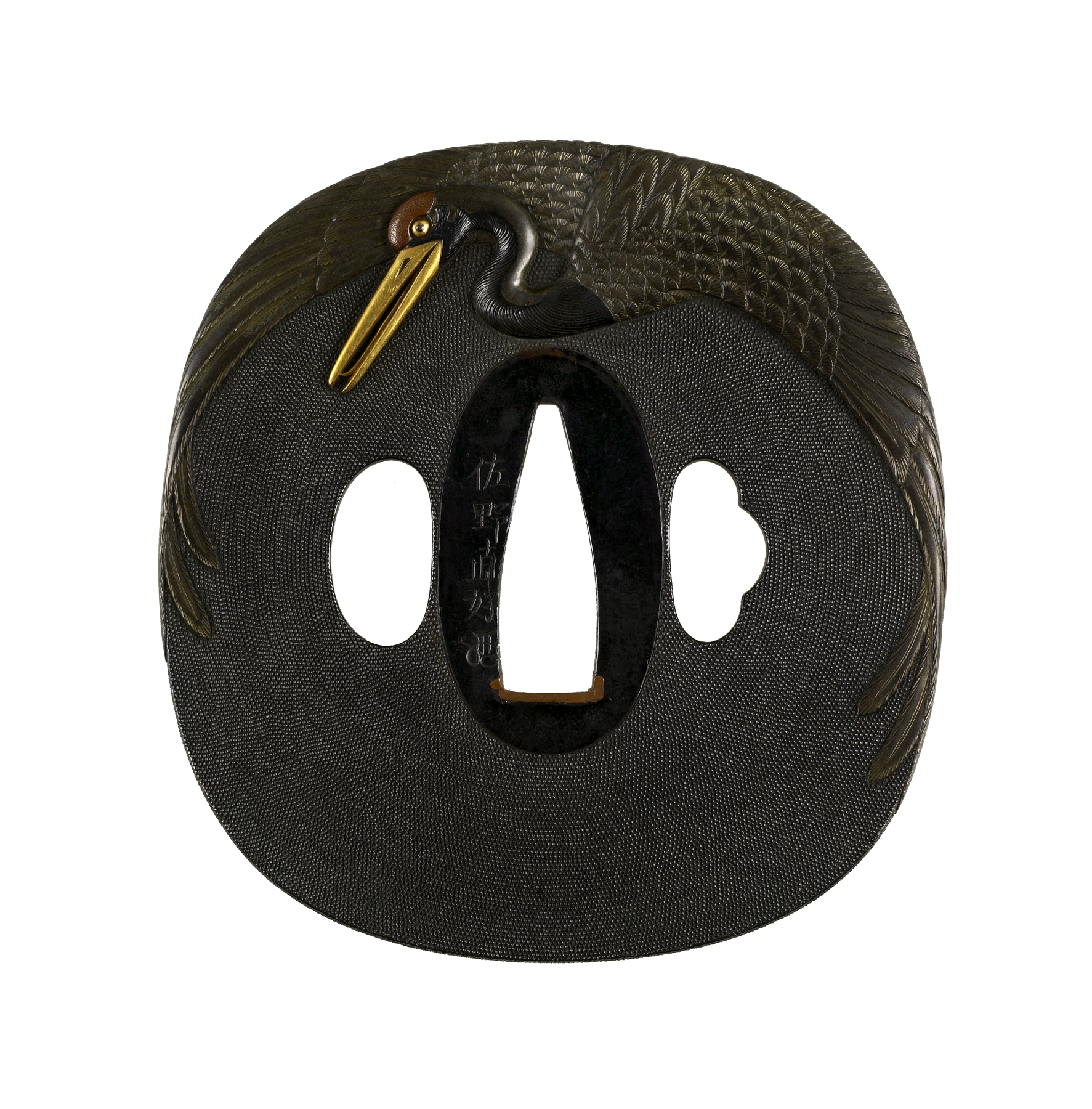Tsuba with a Crane in Flight
(Japanese Military Armor)
A large crane hovers at the top of this tsuba. Its wings follow the curve of the tsuba body. The depiction of the crane continues onto the reverse, where the crane's legs can be seen. The body of the tsuba is covered in a repeating pattern of small dots known as fish eggs ("nanako-ji"). The crane is a auspicious motif and a sign of longevity.
Inscription
Provenance
Provenance (from the French provenir, 'to come from/forth') is the chronology of the ownership, custody, or location of a historical object. Learn more about provenance at the Walters.
Henry Walters, Baltimore [date and mode of acquisition unknown]; Walters Art Museum, 1931, by bequest.
Geographies
Japan, Tokyo (Edo) (Place of Origin)
Measurements
3 1/16 in. (7.7 cm)
Credit Line
Acquired by Henry Walters
Location in Museum
Not on view
Accession Number
In libraries, galleries, museums, and archives, an accession number is a unique identifier assigned to each object in the collection.
In libraries, galleries, museums, and archives, an accession number is a unique identifier assigned to each object in the collection.
51.308






